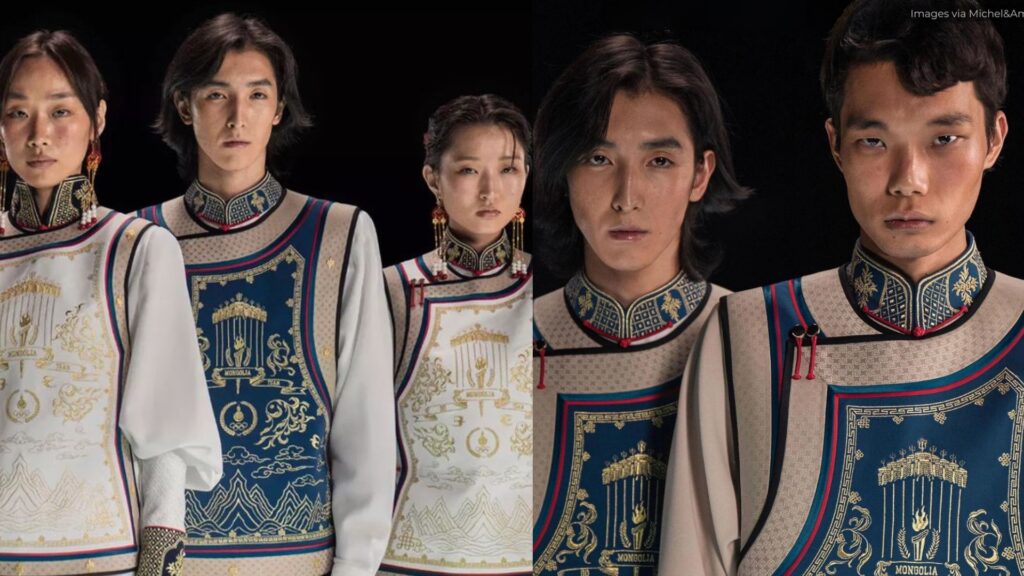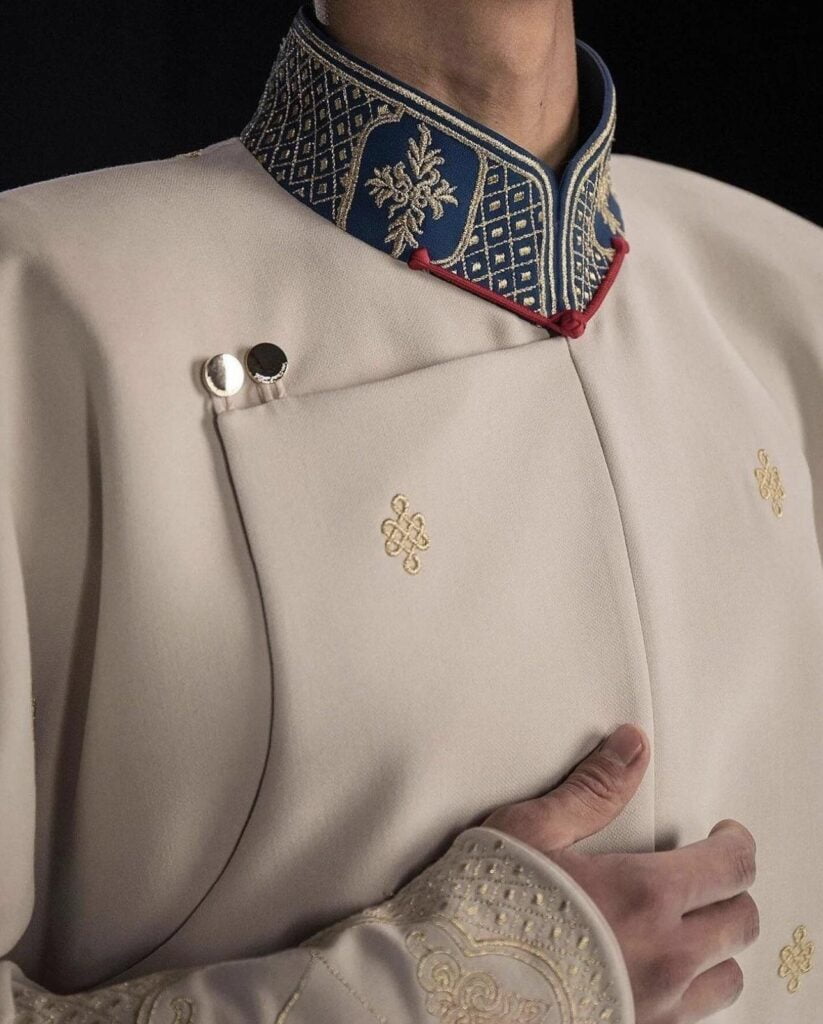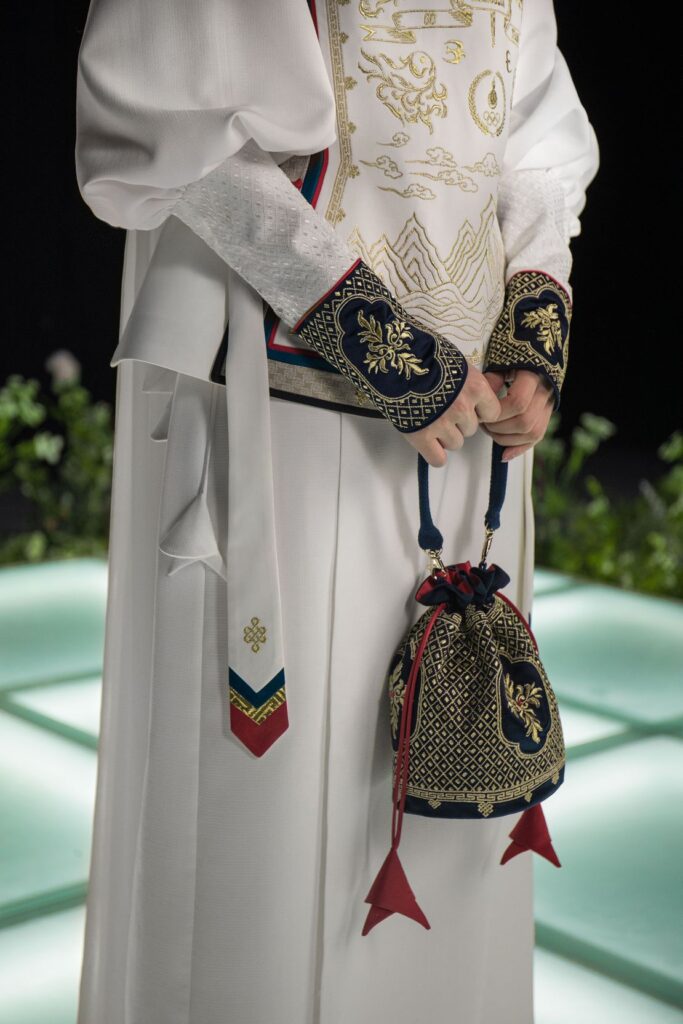The Good
- Cultural Showcase: Mongolia’s Olympic outfits have successfully showcased the country’s rich cultural heritage on a global stage. The designs, inspired by traditional Mongolian attire, feature intricate embroidery, pleated robes, and accessories, which highlight the unique aspects of Mongolian culture. This not only brings attention to Mongolia but also educates a global audience about its traditions and history.
- Positive Publicity: The widespread positive reception of the outfits on social media platforms like TikTok and Instagram has generated significant buzz. The attention can lead to increased interest in Mongolia, potentially boosting tourism and international curiosity about the country’s culture and traditions.
- Pride and Representation: For the Mongolian athletes, wearing these culturally significant uniforms can instill a sense of pride and honor. It represents their heritage and offers them an opportunity to carry a piece of their home country with them, fostering a deeper connection and motivation during the games.
- Innovation in Design: The collaboration with Michel&Amazonka, a local label, highlights the innovative spirit of Mongolian designers. Their ability to blend traditional elements with contemporary fashion has been well-received, showing that Mongolian fashion can stand out on an international platform.
- Support for Local Designers: This opportunity supports and promotes local talent, providing designers Michel Choigaalaa and Amazonka Choigaalaa with a prestigious platform. Such exposure can open doors for future international collaborations and business opportunities for the label.

The Bad
- High Expectations: The significant attention and praise might put pressure on the athletes and designers. High expectations can sometimes lead to disappointment if the actual performance or other aspects of the event do not meet the hype generated by the uniforms.
- Cultural Misinterpretation: While the outfits are celebrated, there is always a risk of cultural elements being misinterpreted or appropriated by the global audience. This can lead to misunderstandings or a superficial appreciation of the deeper cultural significance.
- Commercial Exploitation: The popularity of the designs might attract commercial interests that could exploit the cultural elements for profit, without giving due credit or benefits back to the Mongolian community or designers.
- Comparisons and Criticism: As other countries also reveal their Olympic uniforms, there could be unwarranted comparisons or criticisms that may overshadow the initial positive reception. Fashion is subjective, and differing opinions could lead to negative comments or controversies.
- Sustainability Concerns: The production process, taking an average of 20 hours per outfit, raises questions about sustainability and the environmental impact of creating such intricate designs. In the context of global concerns about fast fashion and sustainable practices, this might attract scrutiny.

The Gist
Mongolia’s Olympic outfits for Paris 2024, designed by Ulaanbaatar-based label Michel&Amazonka, have become a sensation on social media. Featuring intricate embroidery and traditional motifs, the designs blend cultural heritage with contemporary fashion. The outfits, which include elements like ceremonial earrings and traditional Mongolian boots, are crafted to express the essence of Mongolian tradition. They incorporate national colors and symbols such as the Soyombo. The Mongolian National Olympic Committee highlighted that each outfit took an average of 20 hours to craft. The designs have been praised for their beauty and thoughtfulness, garnering millions of views and positive comments online. Founded by sisters Michel and Amazonka Choigaalaa, the label previously designed outfits for the Beijing 2022 and Tokyo 2020 Olympics. Mongolia is sending over 30 athletes to the Paris Olympics, competing in various sports. The country’s involvement and unique outfits have put it in the spotlight, drawing comparisons with other nations’ Olympic uniforms.

The Take
The unveiling of Mongolia’s Olympic outfits for the Paris 2024 Games has caused quite a stir on social media, with many hailing them as the most beautiful and intricate uniforms seen so far. Designed by the Ulaanbaatar-based label Michel&Amazonka, these outfits are a striking blend of traditional Mongolian attire and contemporary fashion. This collaboration is not only a testament to the country’s rich cultural heritage but also a showcase of the local design talent that can hold its own on an international platform.
The designs are deeply rooted in Mongolian tradition, featuring elements like embroidered vests, pleated robes, and accessories such as ceremonial earrings and traditional boots. These elements are not just decorative but carry significant cultural meanings. The incorporation of the national colors—blue, red, and white—along with traditional patterns and the Soyombo symbol, which appears on Mongolia’s flag, infuses the uniforms with national pride and identity.
This initiative by Michel&Amazonka, founded by sisters Michel and Amazonka Choigaalaa, is an excellent example of how fashion can be used to promote cultural heritage. The designers have previously created outfits for Mongolia’s teams at the Beijing 2022 Winter Olympics and the Tokyo 2020 Summer Olympics, demonstrating their capability to blend traditional and modern elements seamlessly. Their work for Paris 2024, however, has brought them unprecedented attention, with social media users across platforms like TikTok and Instagram praising the outfits. Videos showcasing the designs have garnered millions of views, with commentators lauding the attention to detail and the beauty of the uniforms.
Such positive publicity can have several beneficial ripple effects. Firstly, it can lead to increased interest in Mongolia as a travel destination, boosting tourism. The country’s rich history, culture, and traditions, highlighted through such international exposure, can attract visitors eager to experience Mongolia firsthand. Secondly, the success of these designs can pave the way for more international collaborations for Michel&Amazonka, putting Mongolian fashion on the global map.

However, the overwhelming positive response also comes with its own set of challenges and potential downsides. High expectations can place immense pressure on the designers and the athletes. The phrase “they just won the Olympics before it even started,” while flattering, sets a bar that might be difficult to maintain in all aspects. Furthermore, there is always the risk of cultural elements being misunderstood or superficially appreciated by a global audience that might not fully grasp their significance.
Another concern is the potential for cultural exploitation. As the designs gain popularity, commercial interests might attempt to replicate or appropriate these traditional elements for profit, often without fair compensation or recognition to the original creators. This is a common issue in the fashion industry, where cultural designs are frequently used without proper acknowledgment or benefits to the originating communities.
Sustainability is another important consideration. Each outfit reportedly took an average of 20 hours to craft, highlighting the labor-intensive nature of the production process. In an era where sustainability and ethical practices in fashion are gaining more attention, the environmental and social impact of such intricate designs needs to be scrutinized. Ensuring that the production methods are sustainable and that the artisans are fairly compensated is crucial.
Despite these challenges, the unveiling of Mongolia’s Olympic outfits for Paris 2024 is a moment of pride for the country. It celebrates Mongolia’s rich cultural heritage and demonstrates the potential of its local designers to captivate an international audience. The positive reception is a testament to the skill and creativity of Michel & Amazonka and provides a platform for further cultural exchange and understanding. As the world watches the Games, Mongolia’s athletes will not only be competing for medals but also showcasing their nation’s unique cultural identity through their stunning uniforms.




